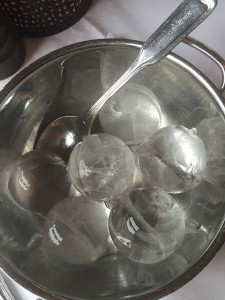The web and social media can be wonderful places to get information – facts and news are able to be shared shared quickly and easily. Unfortunately, the same things that make these areas great for spreading information can also have a drawback. Too often something can get passed along without context, which can change the entire meaning…or information can be widely shared that may not have a solid foundation underneath it.
In the coming months our Dance Wellness team will be putting together some solid guidelines for readers on how to go about evaluating dance medicine and dance wellness information on the Internet. They will share specifics on what to look for when searching for, and reading dance wellness info on the web.
We’ll also be compiling and sharing a list of reputable sites that you can go to for information in this field.
In the meantime, our Dance Wellness editor, Jan Dunn, wanted to address some recent information that has been circulating around on social media about the use of ice for dance injuries to make sure that dancers know that indeed, the ice pack is still a useful tool!
This post is in response to discussions I recently became aware of online (primarily on Facebook) regarding the use of ice in treating injuries. Respected dance educators were advocating throwing away the ice pack, despite the many years where RICE (Rest / Ice / Compression / Elevation) has been advised, or more recently PRICE (Protection / Rest / Ice / Compression / Elevation).
I was not aware of any discussions, presentations, or articles on this topic in the dance wellness field – and so was cautious / skeptical, since some of what is seen or posted online is not necessarily true – or is not in line with current scientific / medical protocols. I started doing some research, and checking with various experts in dance medicine – including members of the 4dancers.org Dance Wellness Panel: James Garrick, MD; Moira McCormack, PT; Selina Shah, MD; Matt Wyon, PhD; Janice Plastino, PhD; Robin Kish, MA; Gigi Berardi, PhD; Emma Redding, PhD; Erin Sanchez, MS; and Nancy Wozny.
And what I learned is — well, please don’t jump on this particular bandwagon and throw away your ice packs!
Some basics
Ice can clearly be overused, and when it is, it’s not good. It can damage the tissue it’s meant to be helping if it’s kept on too long. It is usually advised the first 48-72 hours after an acute injury (like an ankle sprain). Some of the sites online are advising not using ice at all are saying that because inflammation is the body’s way of healing, and they imply that to use ice is to stop inflammation. But ice treats the symptoms of inflammation, it doesn’t get rid of it. Ice and compression (more on that in a moment) can reduce the amount of initial swelling –which speeds the healing process– and this is the whole point of post-injury care.
Why Ice Can Be Helpful
Ice is also very useful for helping decrease pain levels –another major symptom of inflammation. So another good reason not to throw away that ice pack.
There is also the issue of “secondary hypoxic injury” – this refers to tissue not damaged by the primary injury (such as the ligaments directly affected by an ankle sprain), but nearby, which can become damaged as a direct consequence of the physiologic response to the primary injury. Ice can slow down these metabolic processes and therefore save some tissue.
How to Use Ice
When you do use ice, go for at least 10 – 15 min. on a new injury (or until the area is numb, which vary slightly depending on how muscular or bony the area is), allowing at least 20 min. before re-applying. Try to go for at least 5 min. minimum on not-so-new areas, if you can’t do the full 10-15.* You have to also always be sure you have something between you and the ice itself – most icepacks come with a fabric covering, and that works fine. You just don’t want to put ice directly on the skin, without something to protect it (think “freezer burn”!). Never use heat on a new injury.
Compression
Now, let’s briefly go over Compression. Most people interpret this as (for example) wrapping an Ace bandage around a sprained ankle. Yes, all well and good – but, as Dr. James Garrick, MD (one of the founders of both the sports medicine and dance medicine fields) points out:
“The ‘hollowed out’ areas posterior (behind) the malleoli (ankle bones, on both inside and outside of the joint) and anterior (in front of) will have NO compression at all (with an Ace bandage), and those structures (the ligaments that were actually injured) will actually be encouraged to swell more.”
What is needed instead is focal compression (directly on those “hollowed out” areas)—which moves the bleeding away from the areas injured. Dr. Garrick gave the example of a dancer whose sprained ankle was treated with this protocol, and “the ankle actually looks like an ankle, not the polish sausage one sees if just an elastic wrap is used.” He noted that this dancer was able to walk with nearly full ankle motion 24 hours after the injury.
Some of the dance medicine medical and scientific colleagues (and non-dance as well) whom I contacted on this Ice / No Ice question, gave some pertinent thoughts that are worth passing on:
“There is no research that counters the practice of using ice to reduce swelling. On the contrary, there are studies that do show the benefits of ice as well as NSAIDS. Not using ice is not standard of care in sports medicine, and I don’t know of any research in dance medicine.” (orthopedic MD who specializes in sports and dance medicine).
“The articles being referenced (in some online sites advocating no ice) need to be referenced to determine their quality – most research in this area is pretty poor. I am also a great believer in using our years of clinical experience (on the beneficial aspects of using ice)”. ( PhD researcher in Sports Physiotherapy).
“Until I see some really solid physiological studies, over time, that ice is detrimental and actually damages the tissues, I will continue to use it as part of my treatment protocols.” (long-time sports medicine physical therapist).
So in conclusion – I hope this article / advice from dance (and sports) medicine experts (who keep up with the latest research) will help clarify this for you, and as I said at beginning – please don’t throw away your ice packs!
Happy Nutcracker and Holiday Season! – Jan Dunn, MS, Dance Wellness Editor
*Please note that this time has been adjusted from the recommendation of 5 minutes, along with a clarification to make it more applicable to a variety of injuries

Editor Jan Dunn is a dance medicine specialist currently based on the island of Kauai, Hawaii, where she is owner of Pilates Plus Kauai Wellness Center and co-founder of Kauai Dance Medicine. She is also a Pilates rehabilitation specialist and Franklin Educator. A lifelong dancer / choreographer, she spent many years as university dance faculty, most recently as Adjunct Faculty, University of Colorado Dept. of Theatre and Dance. Her 28 year background in dance medicine includes 23 years with the International Association of Dance Medicine and Science (IADMS) – as Board member / President / Executive Director – founding Denver Dance Medicine Associates, and establishing two university Dance Wellness Programs
Jan served as organizer and Co-Chair, International Dance Medicine Conference, Taiwan 2004, and was founding chair of the National Dance Association’s (USA) Committee on Dance Science and Medicine, 1989-1993. She originated The Dance Medicine/Science Resource Guide; and was co-founder of the Journal of Dance Medicine & Science. She has taught dance medicine, Pilates, and Franklin workshops for medical / dance and academic institutions in the USA / Europe / Middle East / and Asia, authored numerous articles in the field, and presented at many national and international conferences.
Ms. Dunn writes about dance wellness for 4dancers and also brings in voices from the dance wellness/dance medicine field to share their expertise with readers.







A timely post! Thank you for explaining in greater detail the proper use of ice as well as the reasons why it helps. I am a big advocate of RICE (adding an A for advil for the pain!) but didn’t know 5 mins at a time was sufficient.
🙂
Thanks for this info- very beneficial to back up our advise to students!
Thank you for this post! Crucial to be well educated and understand what sources are credible with all that is shared via social media. RICE with the added A (thanks Leigh) is what I will continue to do and pass along to my students as well.
Thank you for printing this information regarding the use of ice.
However, I disagree with your recommendation for the amount of time to ice for an acute (fresh) musculoskeletal injury. Five minutes at a time is NOT sufficient. The recommendation would be 15 to 20 minutes of cryotherapy per session. Smaller areas (e.g., finger) require less time, while larger areas require more time. The only exception would be the anterior (front) hip, where icing should be limited to 10 minutes, due to a small nerve in the area that can get frostbite from longer sessions. The frequency of application of the ice can be once or twice an hour for a total of 2 to 5 sessions per day.
There are many studies over the past decades that have studied ice for acute injuries. See, for example, Hocutt et al, Cryotherapy in ankle sprains. Am J Sports Med. 1982;10(5):316-9.
Traditional Chinese Medicine (TCM, which include acupuncture) does not recommend the use of ice. This is for many reasons, including the thought that the body’s reaction to an injury (swelling, inflammation) must be good, and also that ice in general causes “stagnation.” Historically, TCM does not utilize ice because of the traditional association between “cold” and “death.” It is this TCM influence that we are now seeing in the recommendations that come from some educators. Please do not be led astray by this argument.
Ice is still a powerful and effective tool for use after an acute injury!